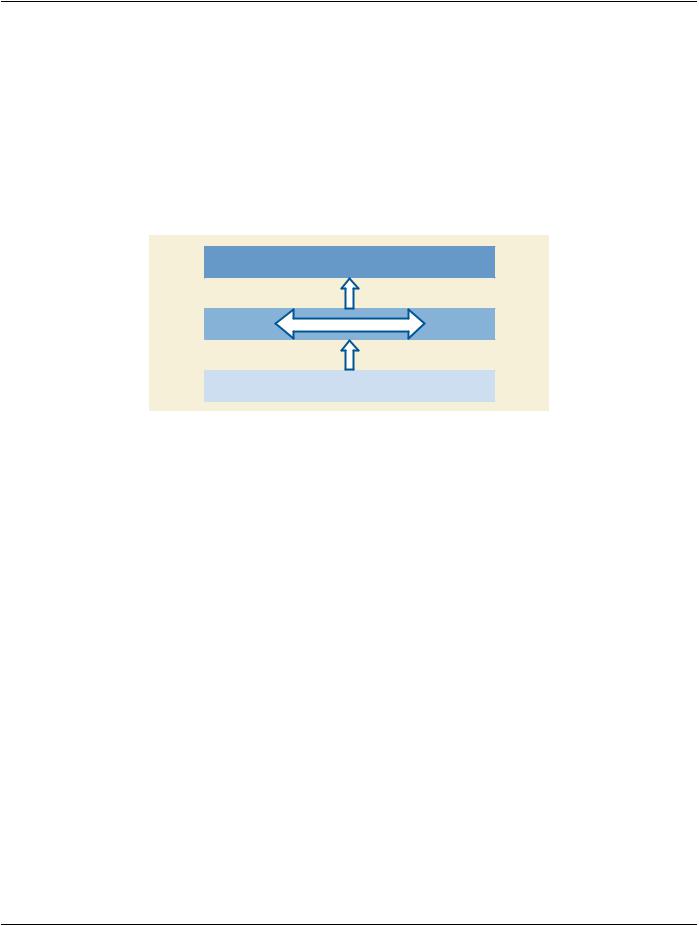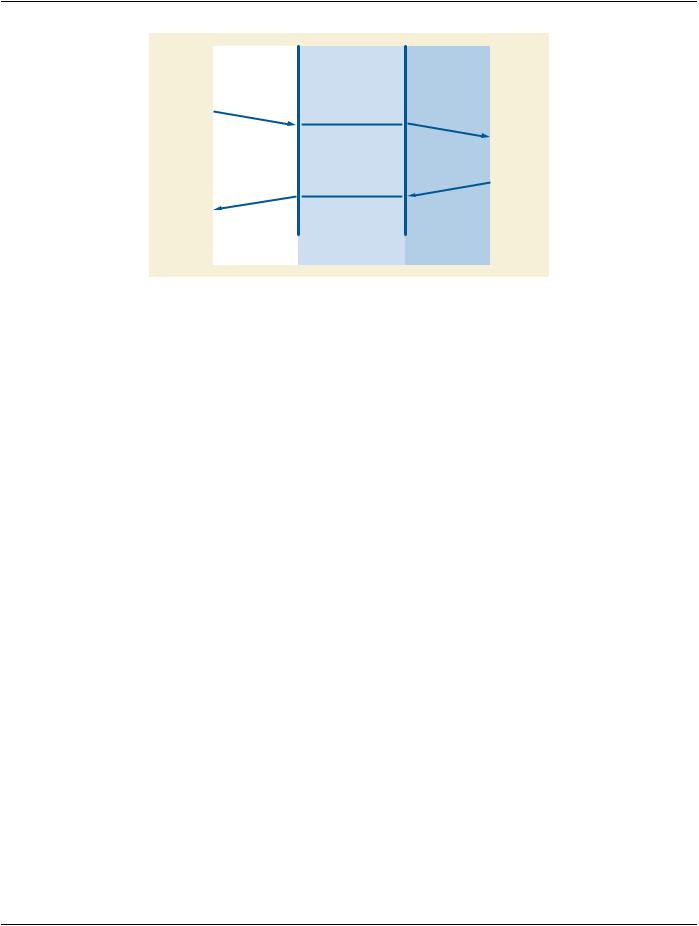
PS-2020a / part08
.pdf
DICOM PS3.8 2020a - Network Communication Support for Message Exchange |
Page 71 |
G Overview of the OSI Layer and Services
Concepts (Informative)
In a layered communication model, such as the OSI 7 layer reference model, each layer uses the service provided by the layer imme- diatelybelow.Theoperationofaprotocollayerontopofthelowerlayerserviceprovidesanewservicetothelayerabove.Theservice is the "glue" between the layers of protocols.
Services describe the resulting effects of the operation of a protocol without requiring knowledge of the detailed specifications of the protocol itself. A protocol specifies a horizontal dialogue between two computing systems across a network, while a service describes a vertical relationship within a system. See Figure G-1.
Service provided to the layer above
Protocol within a Layer
Service provided by the layer below
Figure G-1. Relationship of Services to Protocol
The OSI Upper Layer Service is described by a number of service primitives. They each model one of the functional interactions between the service-user in the layer above and the service-provider. In the context of this Standard, the service-user is called the DICOM Application Service Element. The service-provider is called the Upper Layer and performs the Upper Layer Protocol.
Note
The OSI UL Services defined in this Standard are provided by the DICOM Upper Layer Protocol for TCP/IP (Section 9).
These service primitives cross the layer boundary at what is called a Service Access Point (SAP). In most cases a direct relationship exists between service primitives in two Application Entities (AEs). This is reflected in the names of these primitives:
a.A request primitive in System A induces an indication primitive in System B.
b.If an indication primitive in System B requires a reply, a response primitive may be issued at the Service Access Point (SAP) in System B. This response primitive will induce a confirmation primitive in System A.
The different types of service primitives and their relationship are shown in Figure G-2. The dotted lines represent the exchange of Protocol Data Units that are triggered by request/response primitives or generated indication/confirmation primitives.
- Standard -

Page 72 |
DICOM PS3.8 2020a - Network Communication Support for Message Exchange |
Application Entity in |
|
Application Entity in |
System B |
|
System B |
Requestor |
DICOM UL |
Acceptor |
Request |
Service Provider |
|
Primitive |
|
|
|
|
Indication
Primitive
Responsive
Primitive
Confirmation
Primitive
Service Access Point |
Service Access Point |
( SAP ) in System A |
( SAP ) in System A |
Figure G-2. Service Description Conventions
- Standard -

DICOM PS3.8 2020a - Network Communication Support for Message Exchange |
Page 73 |
H Index of Item and PDU Types (Informative)
Retired.
- Standard -

Page 74 |
DICOM PS3.8 2020a - Network Communication Support for Message Exchange |
- Standard -
